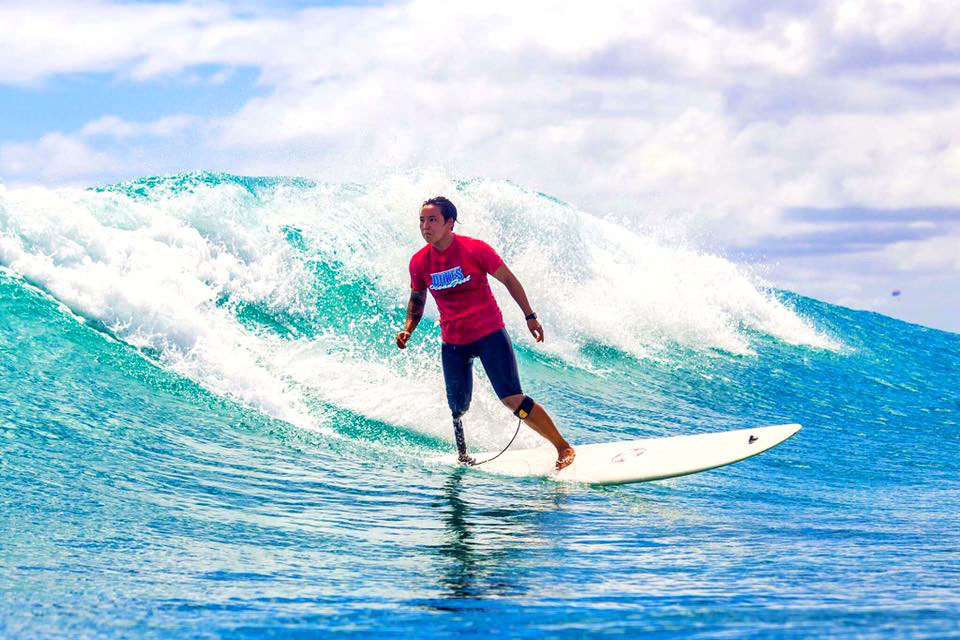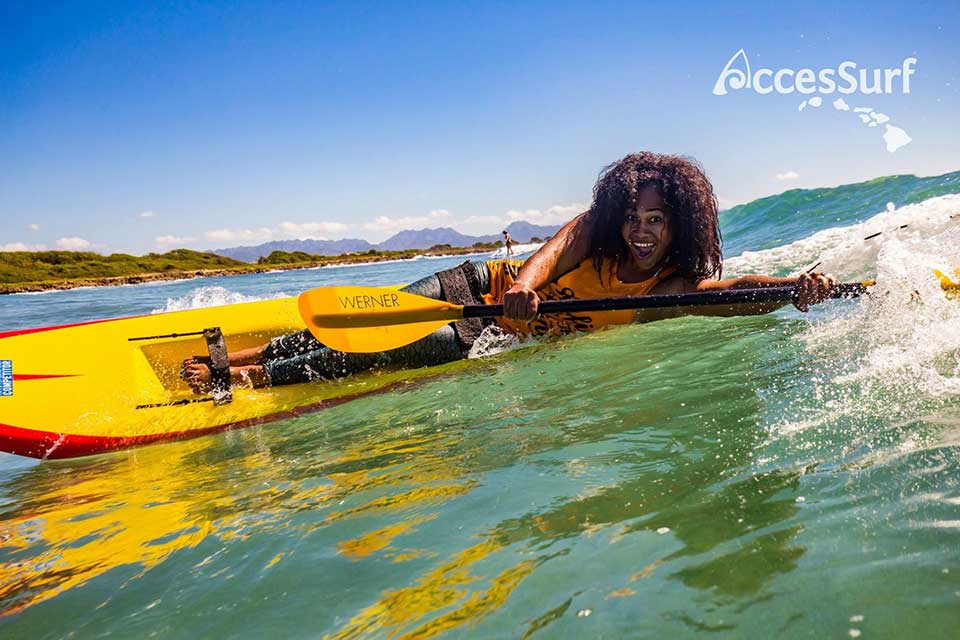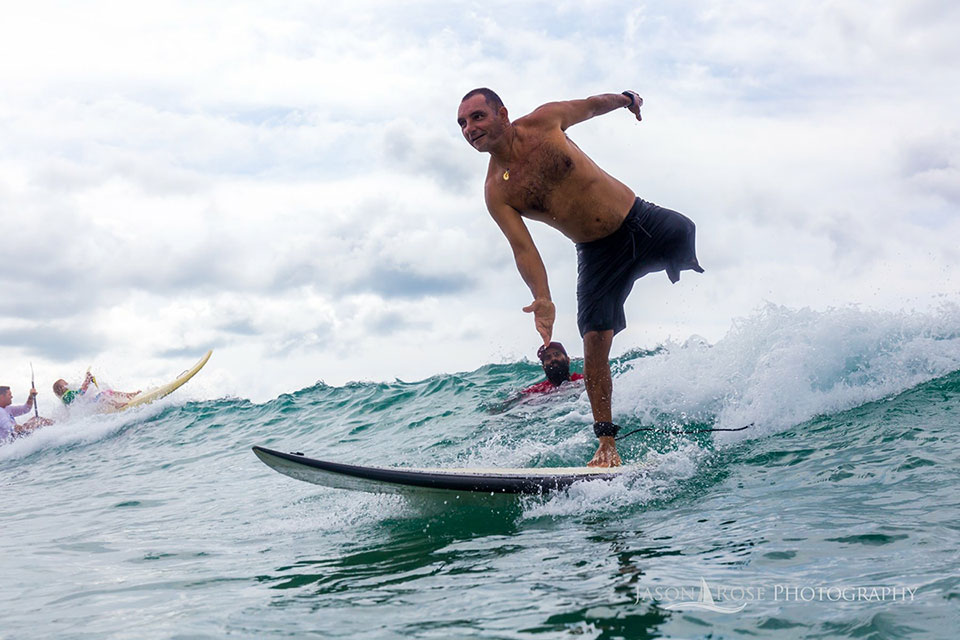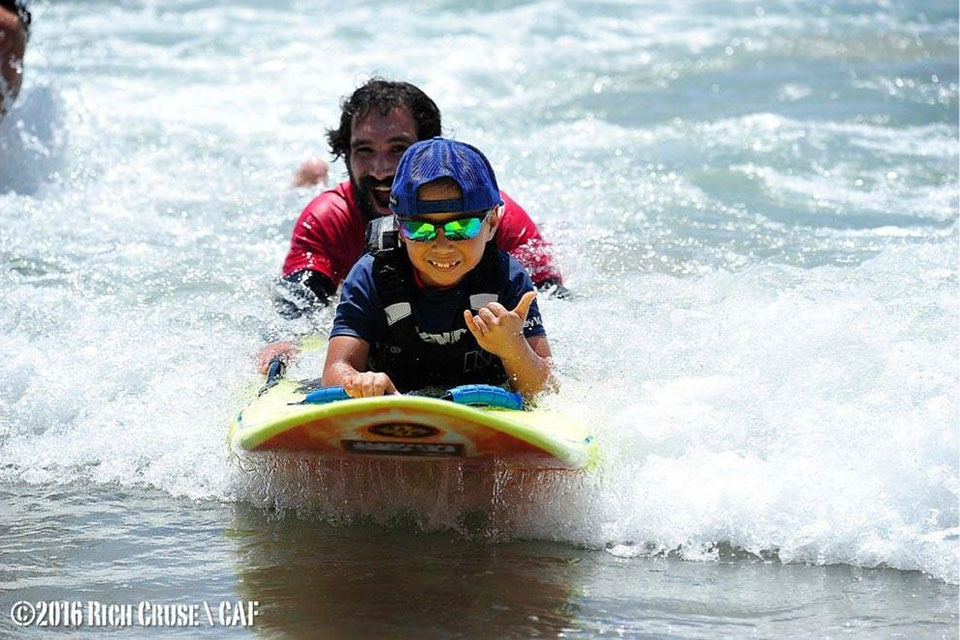Inclusion

Where to find Adaptive Surfing
09/16/2018
Championship – 2017 Stance ISA World Adaptive Surfing Championship
09/26/2018
The United Nations Convention said in 2008 that “Inclusion” of persons with disabilities is a human right. Inclusionmeans that all people are destined to participate in social life.
In other words, people with disabilities no longer have to integrate and adapt to the environment, but they are equipped in the beginning so that all people can live on an equal footing – no matter how different they are. The ideal of inclusion is that the distinction “disabled/not disabled” no longer has any relevance
“The full implementation of the idea of inclusion in all sections sports is far away. Since 2009, the United Nations Convention the rights of persons with disabilities is also legally binding in Germany.
While in Germany sports structures are almost exclusively characterized by segregation, in other countries, such as Canada and Great Britain, people have been grappling with inclusion at the organization level for about 20 years. For example, in Canada in the early years of 1990, the umbrella organization of Sports Canada Top-Down-Strategy, the motto is that the area of responsibility of the various sports associations to include the handicapped sport. In case of non-compliance, the associations have threatened financial penalties. As a result of the equal classification of athletes and sportsmen with and without handicap in the same sports association are equivalent financial support measures and, at least in the case of members of the Paralympic-teams-win rewards equivalent after the medals.” ww.behindertenrechtskonvention.info
“In Germany, a sport-specific combination of people with and without disabilities in the best associations is currently unthinkable, which is mainly due to the negative attitude of those responsible for disabled sport. In order to make a rethink, a fundamental change of mentality is necessary. Unfortunately, Performance Sport for people with disabilities is not considered to be of equal value by many non-disabled performance sports officials.” www.BPB.de
“People with disabilities must be given the opportunity to participate fully. This concept is applied in the United Kingdom or Canada. Disabled and non-handicapped athletes are supervised by the same trainers in a common environment, they receive the same payment and have the same requirements in medicine, psychologists, career counseling.
In Germany, where the United Nations Convention on the rights of Persons with disabilities 2009 has been ratified, Paralympic-winner of the German Sports Aid Foundation to date has received a premium of 4 500 euros, for Olympic Gold without handicap, the Payment was more than three times higher. After the criticism also from the athletes, bonuses were increased, there are now 7 500 euros for a win. But inequality remains deeply rooted in the structures.” www.zeit.de
Globally visible successes of inclusion
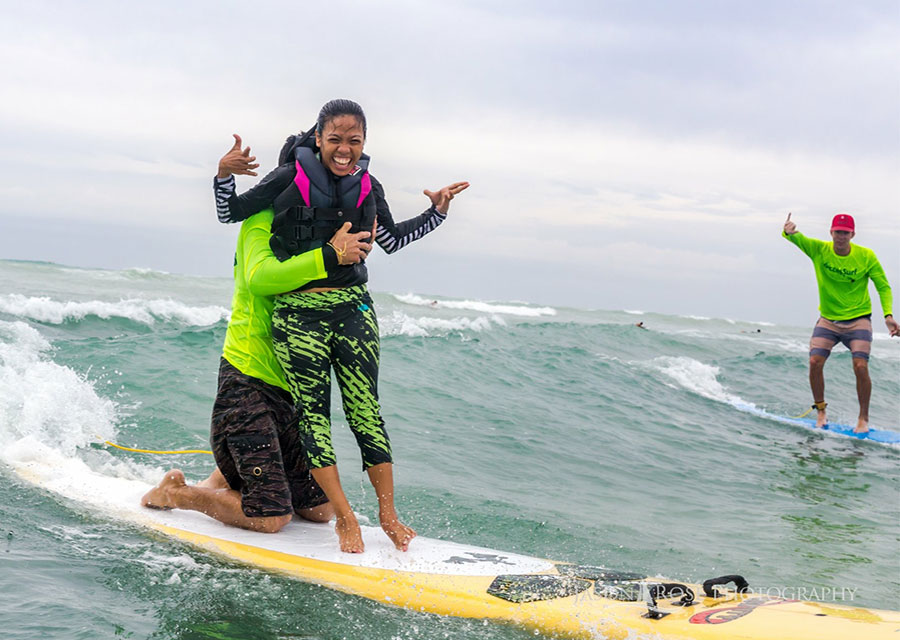
@Jason Rose Photography
In countries such as England, Italy, Australia, Brazil, Hawaii and France, the
Handisurf is very well established. There are now numerous clubs and surf schools, which are completely equipped with equipment and therefore have everything at their disposal to get started immediately. In Hendaye, a beautiful city in the Basque Country, there is even a beach section for people with disabilities.
In the case of many nations, the issue of inclusion of people with disabilities is at the top of the agenda in domestic policy, and this implementation was set in motion by a UN convention on the Rights of disabled people at the end of 2006. This advocates that the disadvantage of people with disabilities cease and that they are recognised as full citizens in society. The UN Convention provides for the equal rights and participation of all disabled people in social life. Thus, inclusion is seen as a human right. Most European countries are implementing this equality, but others are still lagging behind, sadly Germany belongs to those. The implementation of these conventions of the individual countries is visible, the said nations and their teams had the support of coaches, therapists and caregivers .
The International Surfing Association (ISA) plays an important role in the development and progress of Adaptive Surf. The goal of the association is to reach a global platform for the accessibility of surfing and at the same time give the courageous surfer a chance to show their excellent performance in this area, in order to be able to inspire others. The organization, take into account of the technical aspects of adaptive surfing and they have various classifications and regulations elaborated. In addition, regular scientific research is being conducted to meet the demands of the best athletes. The movement has spread like wildfire in recent years and continues to grow. The community is happy to welcome new additions.
Famous adaptive surfers
The most famous surfer with handicap is Bethany Hamilton http://BethanyHamilton.com/ : Because of a shark attack, she had lost her left hand. With a lot of training, faith, courage and motivation she was able to find again the path on the board. Bethany could regain her surfing career successfully with special equipment and especially the support of her family and friends helped her to become a professional surfer in that sport.
Bethany is an inspiration for us all.
An inspiration is also the blind surfer Derek Rabelo http://beyondsightmovie.com/ Brazil or Scott Leason https://www.surfertoday.com/Wakeboarding/14446-Scott-Leason-becomes-the-First-Blind-wakeboarder-to-compete-in-the-WWA from San Diego.
Links to surf organizations and Surf schools:
Www.associationsurfeursdargent.com
Surfing 4 All The project
These Above Recorded positive examples, finally some questions are asked:
- Why the policy doesn’t run the way, although we know that people are getting older and, that the number of illnesses and disabilities is increasing.
- Why people without disabilities decide on recreational life and self-determination of people with disabilities?
- Why many non-disabled people want nothing to do with people with disabilities?
- Why are we being discriminated against in the knowledge that the majority of people with disabilities have been taken in this situation only by illness or accident?
- Where is the compassion for one another?
Causes of disability
86.45% disease (including vaccination damage)
03, 81% Native
00.84% work-related accidents and occupational diseases
00.48% Traffic Accidents
00, 09% Domestic Accidents
00, 31% Other Accidents
00.32% War, military or civil service damage
07, 70% other Causes

